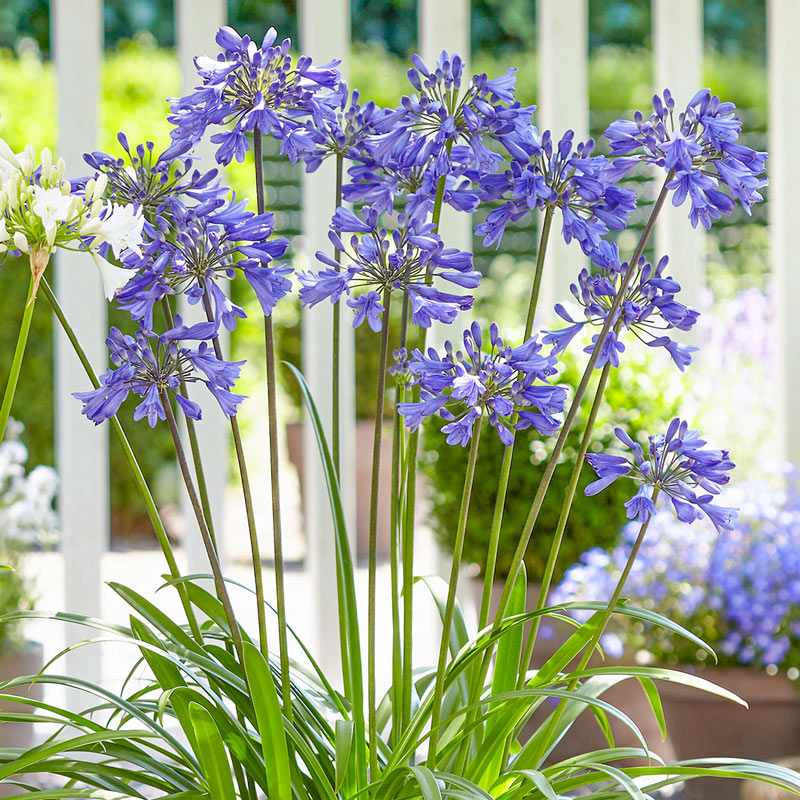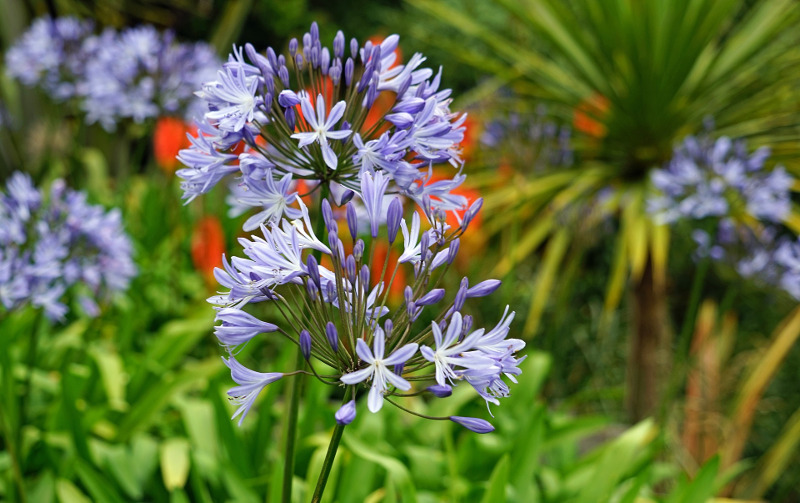Stunning Agapanthus: Enhancing Your Garden's Beauty
Stunning Agapanthus: Enhancing Your Garden's Beauty
Blog Article
Letting Loose the Secret to Effective Agapanthus Growing: Tips and Techniques for a Flourishing Garden
In the world of gardening, cultivating agapanthus effectively calls for a calculated approach that incorporates various aspects of plant treatment. By recognizing the subtleties of agapanthus growing, one can create a setting where these plants grow and bloom generously.
Planting Agapanthus: Ideal Practices
When planting Agapanthus, correct dirt prep work is vital for making certain successful growth and development of these gorgeous blossoms. Agapanthus, frequently recognized as Lily of the Nile or African lily, prospers in well-draining soil with a somewhat acidic to neutral pH level - Agapanthus. Before growing, it is essential to amend hefty clay soils with raw material such as compost or peat moss to boost water drainage and provide important nutrients for the plants
To plant Agapanthus, choose a place that obtains complete sunshine to partial shade, as this will certainly advertise healthy and balanced development and bountiful flowering. Dig a hole two times the diameter of the plant's origin ball and place the Agapanthus at the very same depth it was formerly growing. Gently backfill the opening with soil, pushing down firmly to remove any type of air pockets around the origins.
Water the newly planted Agapanthus thoroughly and proceed to maintain the dirt equally moist, specifically throughout the plant's energetic growing season. Agapanthus. Using a well balanced plant food once a month can further support the plant's development and blooming. By adhering to these ideal methods for planting Agapanthus, you can produce a sensational display of these fascinating blossoms in your garden
Ideal Dirt Conditions for Agapanthus
For optimum development and blooming success of Agapanthus plants, ensuring the soil problems are ideal is important. Agapanthus grows in well-draining dirt with a slightly acidic to neutral pH degree ranging from 6.0 to 7.0. This type of soil enables ample water drain, preventing waterlogging which can result in root rot. To improve dirt drain, consider adding raw material such as garden compost or peat moss when preparing the growing website. Moreover, Agapanthus chooses dirt that is rich in nutrients, so including a balanced fertilizer throughout the expanding period can advertise healthy and balanced growth and vivid flowers.

Watering and Fertilizing Tips
To make certain healthy and balanced development and dynamic blooms, proper watering and fertilizing techniques are important for effective Agapanthus farming. Agapanthus plants benefit from regular watering, specifically throughout the growing period.
When it involves fertilizing Agapanthus, a well balanced plant food with equivalent parts nitrogen, phosphorus, and potassium can be used in the springtime to advertise healthy and balanced development and blooming. Slow-release plant foods are optimal for offering nutrients gradually over an extensive period. Avoid over-fertilizing, as this can lead to too much vegetation growth at the expense of flowers.
Additionally, integrating organic matter like compost into the dirt can improve nutrient levels and boost dirt structure, aiding in the total health of the Agapanthus plants. By adhering to these watering and feeding ideas, garden enthusiasts can ensure their Agapanthus plants grow and create magnificent screens of blossoms.
Pruning and Deadheading Methods
Proper trimming and deadheading techniques play a critical function in maintaining the wellness and aesthetic appeals of Agapanthus plants, complementing the important techniques of watering and fertilizing for successful farming. Pruning Agapanthus entails eliminating invested flower heads, dead or yellowing leaves, and general shaping of the plant to promote far better growth. Click Here Deadheading, the process of eliminating discolored blossoms, not only improves the plant's appearance however additionally motivates more blooming.
When deadheading Agapanthus, it is a good idea to snip off the flower stem at the base using sharp, tidy shears. This procedure reroutes the plant's energy from seed manufacturing back right into root and foliage development, promoting a much healthier and extra robust plant. Routine deadheading can expand the growing period of Agapanthus and stop self-seeding, which can lead to overcrowding.
In regards to trimming, Agapanthus typically take advantage of a light trim after blooming to clean the plant and urge fresh development. Reducing the invested blossom stems and getting rid of any kind of dead or broken foliage helps maintain the plant's vitality click reference and total look. Nonetheless, it is necessary to prevent cutting into the crown of the plant, as this can compromise its health.

Protecting Agapanthus From Vermins and Diseases
Applying effective bug and illness monitoring methods is important to protecting the health and wellness and vitality of Agapanthus plants in farming. Agapanthus are generally durable plants, however they can still come down with numerous pests and conditions otherwise properly looked after. One typical pest that influences Agapanthus is the Agapanthus borer, a caterpillar that tunnels into the plant, causing damages to the leaves and flowers. To stop infestations, routine evaluation of the plants is important. If borers are detected, they can be by hand gotten rid of, or insecticidal soap can be used as a control measure.
In enhancement to insects, Agapanthus are at risk to diseases such as origin rot and fungal leaf places. These problems can commonly be prevented by making sure proper drain and staying clear of overwatering. Impacted components of the plant need to be quickly eliminated to stop further spread if important source indicators of illness appear. Fungicides might likewise be made use of as a treatment action, following the supplier's instructions carefully. By staying attentive and resolving bug and illness concerns without delay, garden enthusiasts can assist their Agapanthus prosper and prosper.

Conclusion
In final thought, effective growing of agapanthus calls for appropriate growing methods, perfect dirt problems, adequate watering and feeding, regular trimming and deadheading, and security from conditions and insects. By complying with these pointers and tricks, garden enthusiasts can make certain a growing yard loaded with attractive agapanthus blooms. Agapanthus. Keep in mind to maintain constant care and focus to information to promote the health and long life of these magnificent plants
When growing Agapanthus, appropriate soil preparation is important for guaranteeing effective growth and development of these gorgeous flowers.Water the recently planted Agapanthus thoroughly and continue to keep the dirt equally damp, specifically during the plant's energetic growing season.For ideal development and blooming success of Agapanthus plants, guaranteeing the dirt conditions are ideal is vital. When planting or hair transplanting Agapanthus, make sure the soil is well-prepared to offer the required structure for the plants to develop themselves efficiently. One typical pest that influences Agapanthus is the Agapanthus borer, a caterpillar that tunnels right into the plant, causing damages to the fallen leaves and flowers.
Report this page